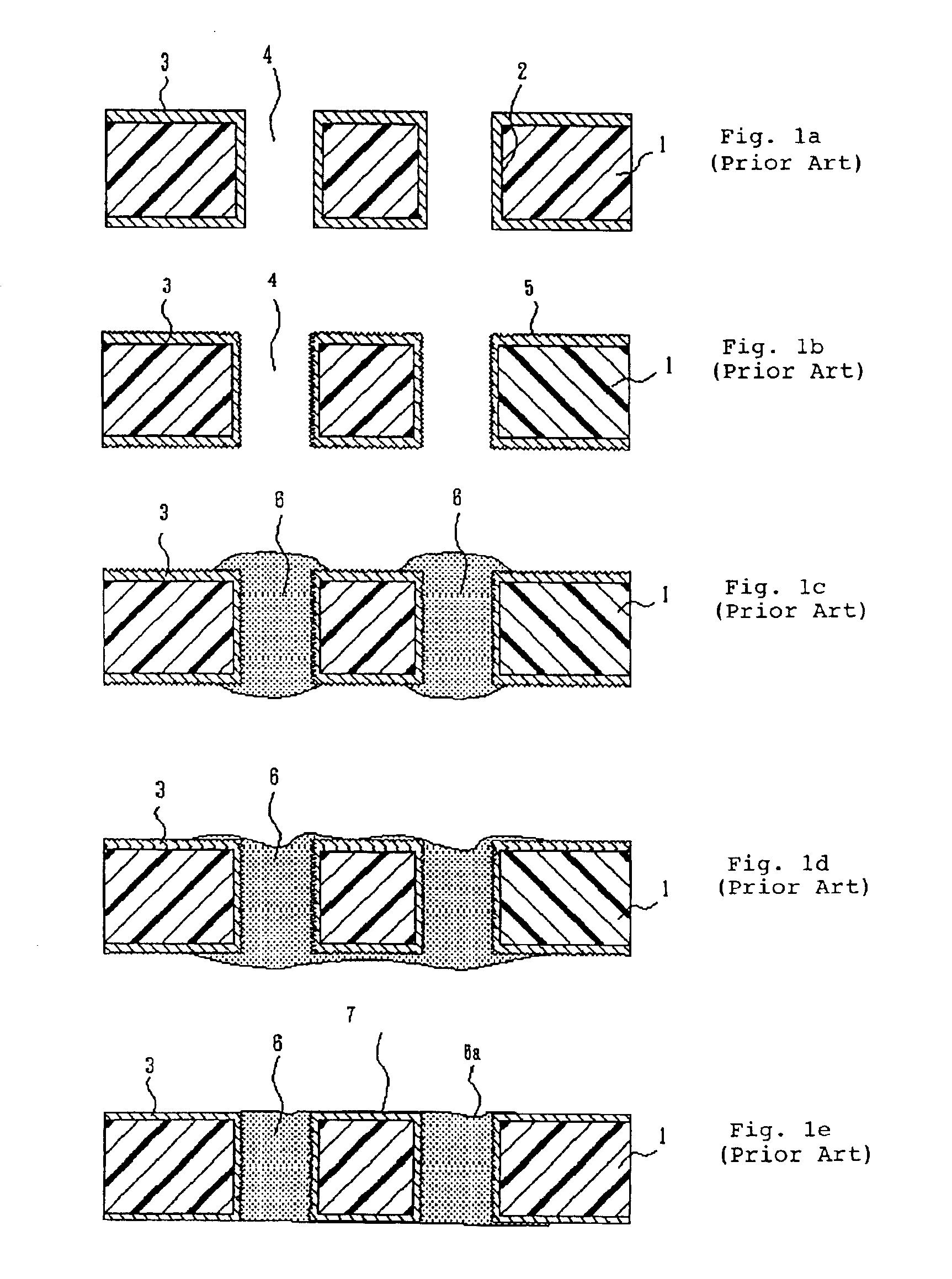Methods of manufacturing board having throughholes filled with resin and multi-layered printed wiring board using the board
a manufacturing method and resin filling technology, which are applied in the direction of conductive pattern formation, transportation and packaging, and improvement of metal adhesion of the insulation substrate, can solve the problems of reducing the planarity of the build-up resin layer, causing air voids to be trapped, and producing defective multi-layered build-up wiring boards. achieve the effect of achieving reliability
- Summary
- Abstract
- Description
- Claims
- Application Information
AI Technical Summary
Benefits of technology
Problems solved by technology
Method used
Image
Examples
first embodiment
[0037]Referring now to FIGS. 2a to 2e, description will be made on a method of manufacturing a resin filled board according to the present invention.
[0038]First, as illustrated in FIG. 2a, holes 2 are formed through insulating board 1 having copper foils adhered on both sides thereof, followed by formation of conductive layers 3 on the surfaces of board 1 and on the wall surfaces of holes 2 through plating such as copper plating. It should be noted that the underlying copper foils on the surfaces of board 1 are omitted in the figures. A hole formed with conductive layer 3 is referred to as “throughhole”4. Insulating board 1 may be made of a board without copper foils adhered thereon, i.e., a so-called unclad insulating board.
[0039]Materials suitable for insulating board 1 may include a glass fiber containing epoxy resin material, a glass fiber containing BT (bismalleic imide—triazine) resin material, a glass fiber containing polyimide resin material, and a glass fiber containing PPF...
PUM
| Property | Measurement | Unit |
|---|---|---|
| viscosity | aaaaa | aaaaa |
| temperatures | aaaaa | aaaaa |
| thickness | aaaaa | aaaaa |
Abstract
Description
Claims
Application Information
 Login to View More
Login to View More - R&D
- Intellectual Property
- Life Sciences
- Materials
- Tech Scout
- Unparalleled Data Quality
- Higher Quality Content
- 60% Fewer Hallucinations
Browse by: Latest US Patents, China's latest patents, Technical Efficacy Thesaurus, Application Domain, Technology Topic, Popular Technical Reports.
© 2025 PatSnap. All rights reserved.Legal|Privacy policy|Modern Slavery Act Transparency Statement|Sitemap|About US| Contact US: help@patsnap.com



